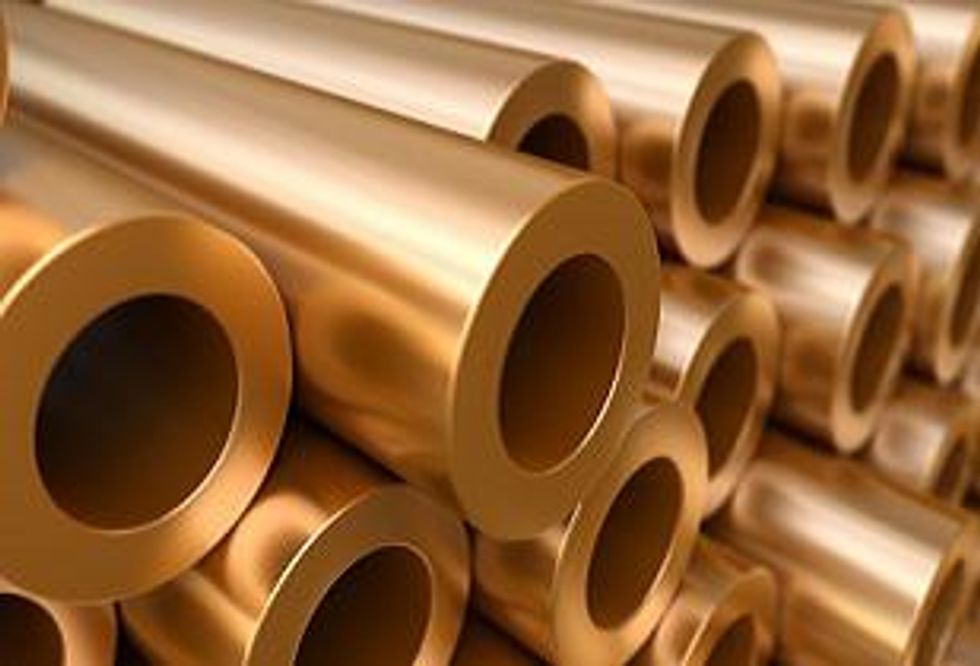China has been rapidly moving forward, to dominate the commodities rally and more than compensating for the rest of world’s shortcomings. Wayne Atwell, Managing Director at Casimir Capital L.P., comments on what he believes has made China a force to be reckoned with.
By Leia Michele Toovey- Exclusive to Copper Investing News
It is no doubt that China has been a powerful force behind the recent commodities rally. While the United States has staged an anemic recovery, China has been moving forward at an alarming rate, dominating the commodities rally and more than compensating for the rest of world’s shortcomings. If you would have asked analysts 16 months ago the question: Could China support copper prices all by itself? You would have come up with a mixed bag of answers. Fast forward to today, and the answer would most definitely be a resounding “yes!”Not only has China supported a commodities rally over the near-past, it is believed that, at least when it comes to copper, that the countries insatiable thirst for the metal will buoy the price for decades to come. It has not always been this way. In the 1980’s China had a marginal influence on the copper market, accounting for only about 10 percent of the globe’s copper consumption. Now, 30 years later, and the country is demanding a whopping 30 percent of world output.
In 2009, China’s stockpiling program imported a record 3.2 million metric tonnes of copper, up 119 percent from the previous year. Since 2000, China’s copper demand has almost tripled. It is projected that in the next five years, China’s copper consumption will rise to 8.5 million tonnes. So- the question arises- what happened? How did China go from an inconsequential consumer to the major player on the demand side of the copper market’s fundanentals?
The answer is simply, “growth.” But there is more to it than that. The mechanism through which China is growing is the cause of its copper cravings. Unlike traditional growth methods that have occurred over history in Europe and the United States, China is growing by moving people out of the rural areas, into an urban existence.
The way that China goes about this almost shows foreshadowing. In speaking with Wayne Atwell, Casimir Capital L.P., Managing Director, about the future of copper demand, he shared with me an important story that paints the picture of what has been occurring in China. Mr. Atwell mentioned an observation he made over the course of Traveling to China for decades. Back in the 80’s and 90’s, Mr. Atwell talked about driving through the countryside of China, where you are in the middle of nowhere, yet you have the road system that rivaled any cosmopolitan city. Mr. Atwell added that when he returned to the same area just a few years later, he would find that it was so built up that it was hardly recognizable. It seems, from Mr. Atwell’s observation- that China builds up its infrastructure, before it needs it, and before too long it develops enough to capitalize on the initial expansion.
This is in fact the growth cycle in modern-day China. An infrastructure expansion, which requires a great deal of copper, precedes the migration of people into a new, urban environment. When they move into their new surroundings, they expect all the amenities of modern life; a flat-screen TV, air conditioners, etc. These modern day amenities require a great deal of copper. In fact, the average home is said to contain at least 90 pounds of copper in electrical wiring and appliances, about 10 times the nation’s annual per capita consumption of the metal. Subsidence farmers use barely any copper, for their entire lives. The Chinese are so accustomed to this method of expansion, that they anticipate it. This has become so expected, that when developing dies down it creates mass panic. China has almost forced itself into a rapid-growth pattern.
Boosting domestic demand and moving people into cities are priorities to maintain China’s fast long-term growth. The government aims to quadruple per-capita GDP from 2000 to 2020.Copper is at the heart of the development. As China continues this expansion pattern, copper demand will skyrocket. China is on pace to almost triple its annual use of copper to 20 million tonnes in 25 years, according to CRU, a London-based metals and mining consulting firm. That’s more than the world produces today. Rising demand will create a potential global shortage of 11 million tonnes a year by 2035, CRU forecasts.
So, where will China get all of its copper from? China, while a copper producer, depends heavily on imports. Production, meanwhile, is barely keeping pace with demand. And few new mine projects are scheduled to come on line in the next couple of years. So after being limited by operational constraints and temporary cuts in 2009, mine production in 2010 is projected by the International Copper Study Group to increase by 6.7 percent, with capacity utilization rates seen improving from 80.7 percent in 2009 to 84 percent in 2010. A lower growth of only 2.9 percent is envisioned for 2011 because of deferrals and delays in mine projects prompted by the economic crisis. This, put simply, won’t cut it.
China’s demand for copper shows no signs of slowing down; and as a net importer of the metal, the pressure is on the rest of the world to develop copper projects, that will meet this nations copper needs. Over the next years, China’s continued growth will support a bull-market, for copper.






